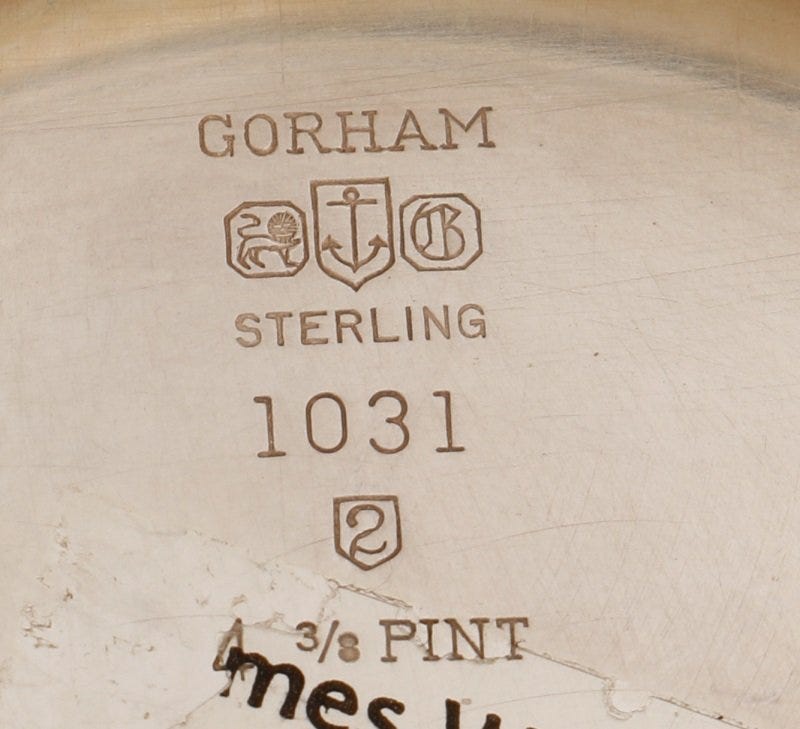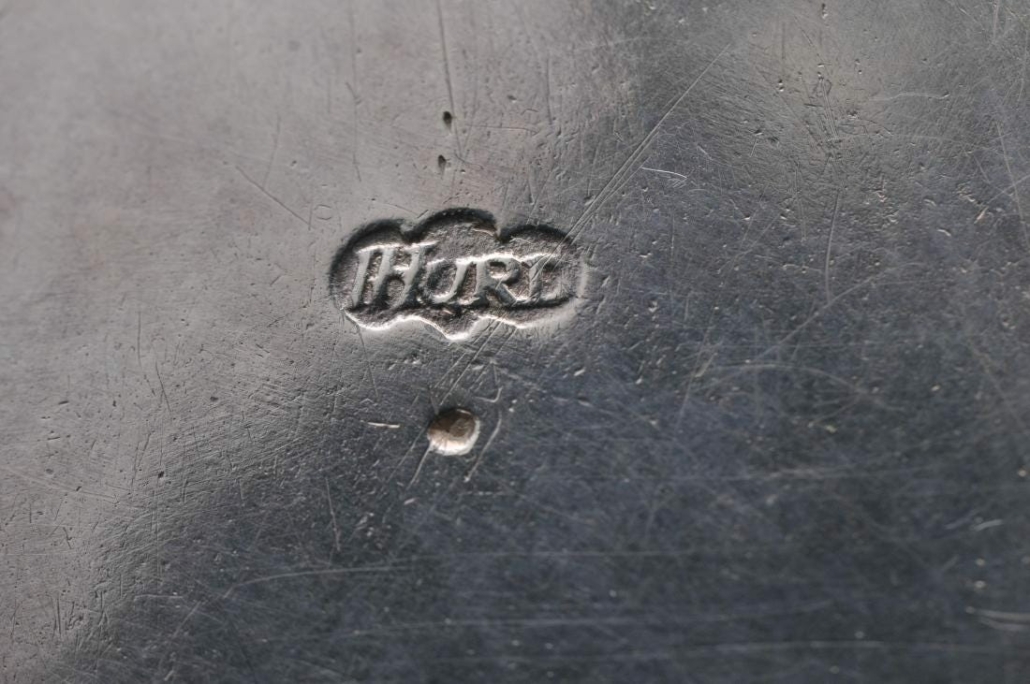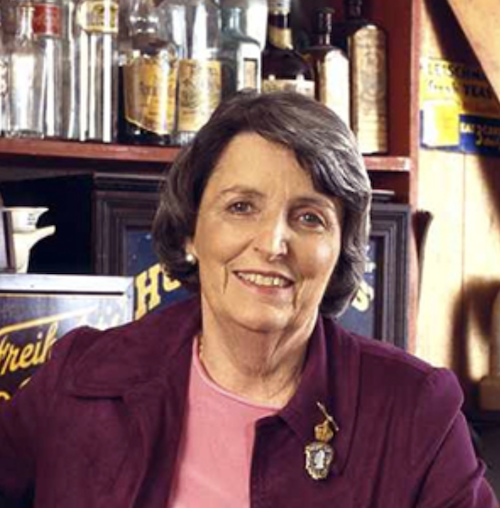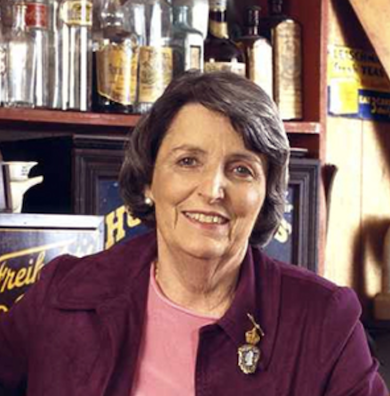
NEW YORK — What Terry Kovel doesn’t know about American silver hallmarks probably isn’t worth knowing. The renowned antiques expert, appraiser and author recently chatted with Auction Central News, sharing tips for collectors on characteristics of American silver, the many hallmarks that have been recognized, and how to care for silver.
She and her late husband, Ralph, wrote more than 100 books on antiques, including annual price lists, and in 1989, they published the definitive book on American silver hallmarks, Kovels’ American Silver Marks, 1650 to the Present. It included more than 10,000 hallmarks from American silversmiths, required more than a year’s worth of work, and features scrupulous research and hand-drawn sketches of hallmarks.
Many people have either inherited silver or own at least one old piece, but seldom do they know the history behind their treasures. For collectors, the true value of a piece is not just in its beauty, but in being able to trace an object back to its maker.

A status symbol in America since the 1600s, silver was only made entirely by hand up until 1840. Few could afford it then, so most colonial silver was created for churches. These ecclesiastical pieces were utilitarian, with simple design, clean lines, and little decoration.
“The easy way to start doing anything in antiques is look on the bottom and see if somebody marked it, and with silver, this is particularly important,” Kovel said, noting people can then go read articles and books, or look online to identify a maker’s mark.
Colonial-era silversmithing was born in Boston with Richard Sanderson (1608-1693) and John Hull (1624-1683), who together created some of the earliest known silver pieces from the region. Paul Revere, Jr., who learned the trade from his father and was active in the same city a century later, might be the most famous American silversmith. Nearly every developed town in America had a silversmith. Decoration styles were often regional, with cities having their own attributes. Silver design from Boston referenced English silver, while New York City was influenced by its Dutch heritage.
“When the American silversmiths were first ‘discovered’ in the early 1900s, most collectors felt that only the eighteenth-century makers were important,” the Kovels wrote in the introduction of their book. Today, collectors appreciate American silver created in the 19th and 20th centuries as well.
English silver is highly regulated and typically has five small hallmarks, including both signatures and logos of the maker, assay marks, and pictorial marks. Early American silver, Kovel said, instead usually had one maker’s mark, though some silversmiths or companies later added fancy logos or pictorial marks. In 1906, sterling silver pieces, as opposed to coin silver pieces, were required to be stamped with the number 925 to indicate purity; the number confirms there are 925 silver parts out of total 1,000 parts in the piece. The remaining parts were comprised of another metal, which was often copper during the colonial period. Coin silver differs from sterling silver as the former was made from coins that were melted down. Given the differences in how each state minted coins in the early days of America, the mix of metals lessens the amount of silver used.

Interestingly, Kovel says a coin silver teapot versus a sterling silver teapot – assuming both are by known makers – should sell for about the same price. “If you want to buy silver to invest in, you have to look at it very differently than if you want to buy to collect, because the only thing that matters if you’re buying it for investment is the percentage,” she said.
The shape and style of a silver object can help date it. “Let’s take a tea set, there is a big tray, which stays pretty much the same all the way along. It’s oval and it has handles. It is a big hunk of silver, and it has to be one piece to be good,” Kovel said. “The teapot goes through a period [of change]…. there was a time when they had fat bellies, when they had a lot of decoration on the outside, and when the teapot is more vertical than horizontal and that dates it.”
Kovel advises new collectors go to antiques shows, auctions, and flea markets and ask questions. “You get a feeling for silver. Be sure you handle everything, because if you pick up a piece and it is terribly light, you know darn well something is wrong.”
When researching silversmiths and studying American silver hallmarks, remember that names starting with I and J sometimes interchanged the initial letter, so check both. Names starting with a vowel can be confused, so a maker name like G. Eoff might have a mark that reads GEOFF.
Among her tips for how to care for silver, Kovel says never put silver in a dishwasher with stainless steel or use instant silver polish. “If you use an instant silver polish, you will get it clean, but it will look like tin,” she said. To remove wax from inside a candlestick, don’t scrape the wax with a knife. Instead, run the piece under hot water so the wax will soften and pop out.

Most American silver hallmarks are the silversmith’s names or initials, mostly in block letters set in a rectangle having straight or rounded edges. They are sometimes set inside ovals or amorphous shapes.
The Kirk Stieff company in Baltimore, Maryland, earned a long listing in the Kovels’ book, with more than a dozen marks used on its hollowware. Hollowware is defined as metal tableware that is not flatware. It includes trays, teapots, candlesticks, compotes, and other three-dimensional pieces. Among silversmiths with interesting marks was the William B. Meyers Co., of Newark, New Jersey, which operated circa 1907-1958 and used a mark of a sun over a pyramid with the letter M inside. “The one I like best is ‘OPPO,’ which meant opposite the post office,” Kovel said. “That was his mark. They don’t tell you who he is, they just tell you where he is.”
To search more than 18,000 silver marks on Kovels’ website, click here or read their identification guide here.
# # #



